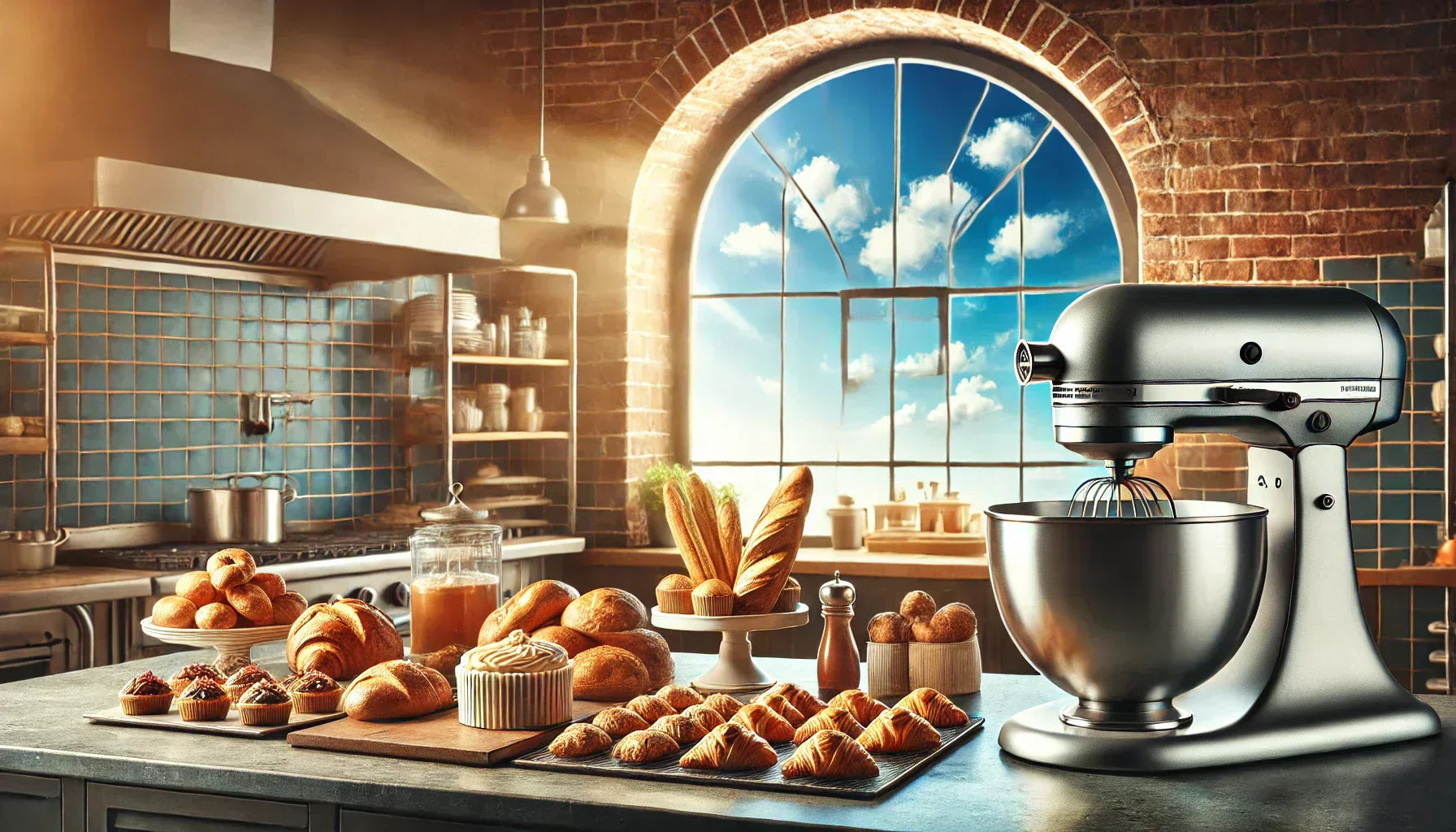
Baking Without a Mixer: Is It Possible?
Ever stared at a recipe and wondered if skipping the mixer would lead to disaster? Short answer: No, you don’t need one! From wooden spoons to elbow grease, mixing by hand works. But should you? Keep reading—your arms, time, and that fancy commercial mixer might disagree!
Baking Needs and Frequency
If you’ve ever wondered whether a mixer is a kitchen essential, the answer depends on how often you bake. Some people pull out their mixing bowls only for birthdays or holidays, while others bake fresh bread or cookies every week. Your baking frequency plays a huge role in deciding if a mixer is a must-have or just a nice extra.
Occasional Baking vs. Frequent Baking
If you only bake once in a while, investing in a mixer might not be worth it. A sturdy whisk, a wooden spoon, and a little patience can handle most basic recipes just fine. But if you bake often, a mixer can be a game-changer. It saves time, cuts down on effort, and helps make baking more enjoyable—especially when tackling big batches.
Benefits of Using a Mixer
Hand-mixing works, but a mixer can take your baking to another level. It’s all about speed, consistency, and versatility.

Simple Recipes vs. Complex Recipes
For easy bakes like muffins, pancakes, or basic cookies, you can get away with hand-mixing. But if you’re making something more advanced—like a soufflé, a meringue, or laminated dough—a mixer can make a world of difference. It helps aerate batters, whip egg whites to stiff peaks, and knead dough evenly. A commercial mixer, for example, can handle tough doughs effortlessly, while a hand or stand mixer takes care of most home baking needs.
Time and Effort Savings
Mixing by hand can feel like an arm workout. While that’s great if you want to skip the gym, it’s not ideal when you have a dozen things to do. A mixer speeds up the process, making it easier to get smooth batters and well-incorporated ingredients in minutes instead of what feels like forever.
Consistency and Quality
Mixers help create a uniform texture, which is important for things like cakes and bread dough. When mixing by hand, it’s easy to overmix or leave lumps. A mixer, however, ensures the right amount of air gets incorporated into your batters, helping your baked goods rise properly and have a light, even texture.
Versatility for Various Recipes
A mixer isn’t just for cake batter. It can whip cream, knead dough, and even shred chicken for tacos. If you love experimenting in the kitchen, a mixer expands what you can make, giving you the freedom to try new recipes without worrying about whether your arm will hold up.
Alternatives to Using a Mixer
No mixer? No problem. There are plenty of ways to get the job done with simple tools and a little know-how.
Hand Mixing Techniques
Using the right technique can make all the difference.
-
Whisking is great for adding air to light batters, like pancakes or sponge cakes.
-
Folding helps mix ingredients without deflating the batter, crucial for soufflés and delicate cakes.
-
Beating with a spoon works for creaming butter and sugar, though it takes some effort.
-
Stretching and folding is a great alternative to kneading when making bread.
With the right tools and patience, you can mix most recipes without a problem.

Specific Baking Tasks and Mixer Necessity
Some tasks are easy to handle without a mixer, while others almost demand one. Knowing the difference can help you decide when a mixer is worth it.
Cakes and Quick Breads
- Can be mixed by hand if you don’t mind a little elbow grease.
Cookies and Pastries
- Stirring vigorously works, but a mixer makes things easier.
Bread and Yeast Doughs
- You can knead by hand, but a mixer helps with tougher doughs.
Whipped Cream and Meringues
- Possible by hand, but you’ll be whisking for a long time.
Conclusion: When a Mixer Becomes Essential
So, do you really need a mixer? It depends. If you bake occasionally, you can get by with manual mixing. But if you bake often or love tackling complex recipes, a mixer can save time, improve consistency, and expand your baking possibilities. Whether you go for a basic hand mixer, a powerful stand mixer, or even a commercial mixer for heavy-duty baking, the right tool can make all the difference. At the end of the day, the most important thing is to enjoy the process—whether you’re whisking by hand or letting a mixer do the work.
You may also like:
Can a Stand Mixer Knead Dough? The Answer Revealed
Cake Mixing: Hand vs. Mixer - Which is Best?
Spiral Mixers for Cookie Dough: What You Need to Know
Unlock Culinary Possibilities with a Commercial Mixer
What is a Bakery Mixer? Essential Kitchen Appliance
The Number One Mixer Found in Bakeries Explained
Cake Mixers: How to Pick the Perfect One
Is a Stand Mixer Better Than a Food Processor for Pie Crust?

